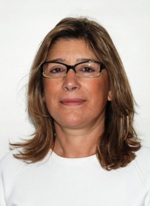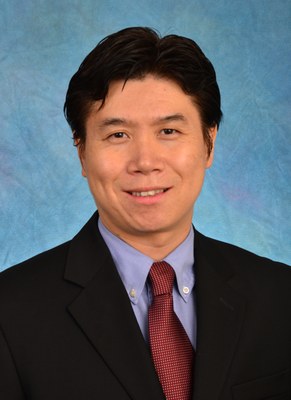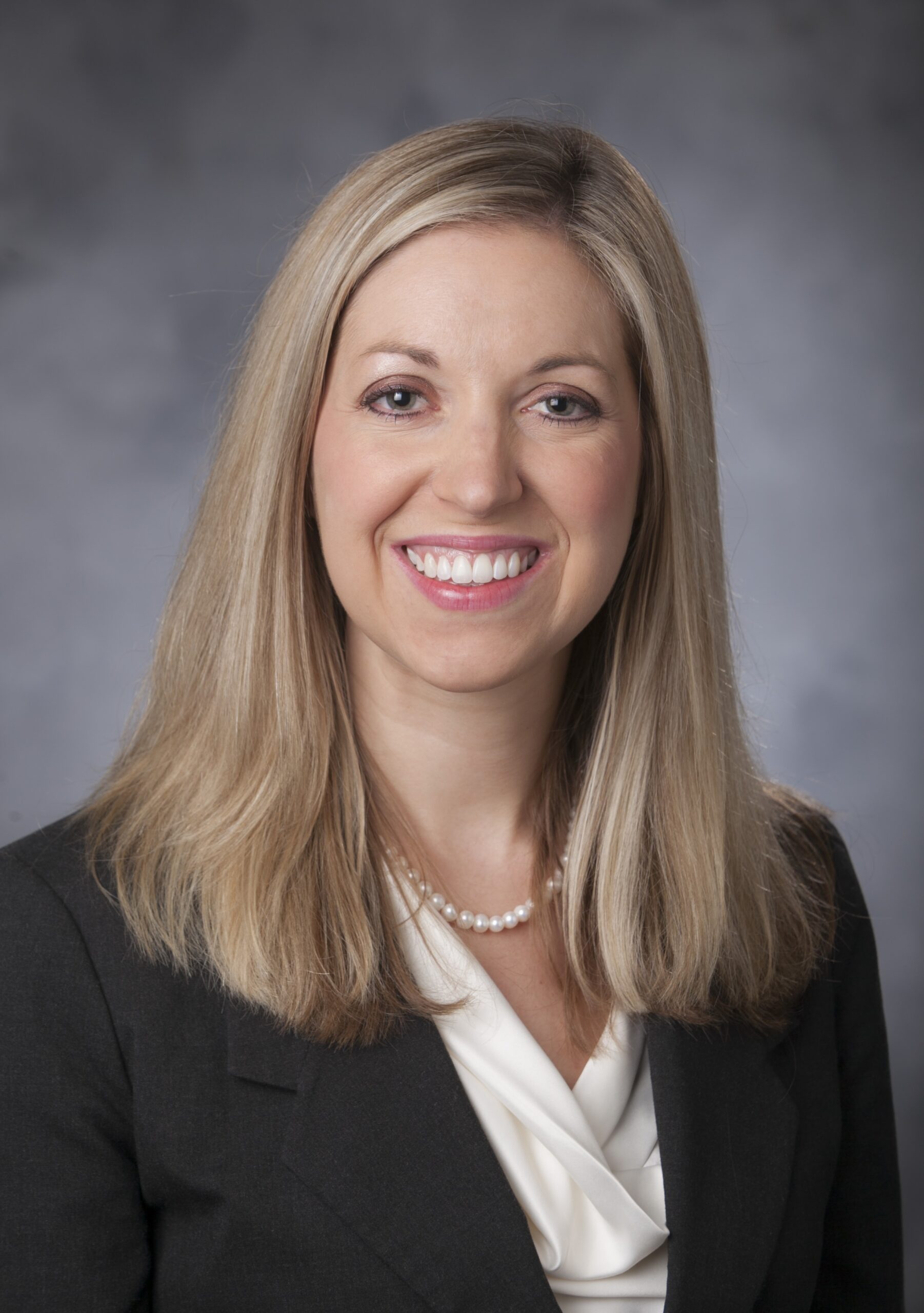(L to R): Drs. Hortensia Alvarez (Professor of Radiology), Kyung Kim (Associate Professor of Radiology) & Jessie Stewart (Assistant Professor of Radiology)
Since UNC’s multidisciplinary Vascular Anomalies Clinic (VAC) opened in 2008, Neurointerventional Radiology (NIR) and Vascular-Interventional Radiology (VIR) faculty have played key roles in growing access, patient care and advanced treatments at this multi-disciplinary facility.
Formerly named the Vascular Malformations Center, the clinic’s early years were steered by a diverse group of individuals including former VIR Division Chief Dr. Joseph Stavas. Today, UNC Radiology faculty at the Center include Dr. Hortensia Alvarez (Professor – Neurointerventional), Dr. Kyung Kim (Associate Professor – Vascular-Interventional), and Dr. Jessie Stewart (Assistant Professor – Vascular-Interventional). They are joined by faculty from 15 UNC School of Medicine departments and divisions in treating adult and pediatric vascular anomalies. Aptly, the facility has been called “a clinic without walls.” Patients will soon easily reach this multidisciplinary clinic with providers from every specialty via a centralized telephone number and an administrative coordinator.
VAC holds a monthly multi-disciplinary vascular conference (1st Tuesday of the month) that was established to discuss patients, suggest management strategies from the standpoint of each specialty, and to share information about research, recent publications, or new diagnostic and therapeutic tools. Physicians from general and pediatric surgery, ENT, hematology/oncology, dermatology, and genetics regularly participate in the multi-disciplinary conference, which is led by Drs. Kim, Stewart and Alvarez.
VAC also provides inpatient consults, most commonly for newborn babies with congenital vascular anomalies. The VAC plays a crucial role in the diagnosis and treatment of patients with vascular anomalies in the NICU performing biopsies, embolization and sclerotherapy procedures.
Superficial vascular malformations are rare and uncommon diseases. They may cause physical deformities that can result in social isolation. Patients have begun to join Facebook support groups and other associations that may influence public opinion and political, administrative or financial decision-making. UNC houses one of 25 National Center of Excellence (HHT Center of Excellence) for patients with Hereditary Hemorrhagic Telangiectasia (HHT) and the Sturge Weber Foundation whose missions are to educate patients and physicians, to help patients to have access to centers of special expertise, to fund and encourage research, and to advocate for public, private and governmental support. We work closely with both and plan to extend our collaborations with other associations.
Under the guidance of Dr. Julie Blatt, a pediatric hematologist and active member of the VAC, the first Vascular Anomalies Family Conference will be held on August 15th, 2020 at UNC’s Friday Center in Chapel Hill, NC.
Beyond clinical care and treating patients, VAC clinical faculty work with UNC basic sciences colleagues– including investigators in Cell Biology and Physiology, Experimental Pathology, and Biomedical Engineering– to improve our knowledge of genetics and molecular bases leading to development of vascular anomalies and subsequently develop targeted treatment techniques and improve patient outcomes.
A significant aspect of the research consists in accumulating data and expertise, which may be challenging when dealing with rare and uncommon diseases. Collecting data is essential in advancing our knowledge of vascular anomalies and the group is also gathering extensive information in a patient data bank to identify different clinical manifestations or phenotypes, biological markers, response to treatments or new subjects for research.
In 2009, Dr. Hortensia Alvarez brought her expertise in managing cerebral, head and neck and spinal vascular lesions in adults and children to UNC. She focuses on adult and pediatric head and neck superficial vascular malformations, while Drs. Kim and Stewart focus on body vascular anomalies. While these radiologists share technical knowledge and resources, head and neck and body vascular anomalies encompass specific challenges that require different expertise. Head and neck vascular anomalies may be associated with cerebral or spinal vascular lesions that need to be managed and treated in collaboration with other neuroscience specialties. While intracerebral vascular malformations are less frequent in pediatric populations, head and neck superficial vascular malformations and anomalies are often diagnosed at birth causing cosmetic deformities and functional issues due to involvement of airways and cranial nerves which may require early intervention by itself or combined with surgery in newborns and very young children.
Dr. Alvarez said: “I gained expertise in intracerebral and head and neck vascular anomalies and malformations working in a European referral center with a strong pediatric environment. Being part of VAC and its multidisciplinary approach in an academic institution and working with the UNC HHT COE team is my ideal situation to keep advancing the knowledge of vascular anomalies and improving patient outcomes.”
Dr. Kyung Kim has been a member of the Department’s IR division and UNC’s VAC for 10 years. Over this time, his clinical and research interests have centered on interventional oncology, hepatobiliary interventions, and GI interventions, all focused on advancing IR techniques that improve clinical outcomes for cancer patients. To meet the increasing need for pediatric expertise at the VAC, Dr. Kim spent a year at Boston Children’s Hospital acquiring high-end technical skills in treating pediatric vascular malformations. Since returning to UNC in July 2019, he has expanded the clinical care offered by the VAC by offering technically challenging diagnostic and therapeutic procedures, such as MR lymphangiography and cryotherapy for soft tissue tumors, such as desmoid tumors or inoperable malignant tumors.
Dr. Kim said: “I brought new skills for the endovascular treatment of complex vascular malformation syndromes to UNC. These patients need lifelong follow-up and early treatment to prevent complications and improve their quality of life.”
Since joining UNC in 2017, Dr. Stewart has treated and clinically managed both adult and pediatric VAC patients with complex vascular anomalies. Dr. Stewart gained specialized expertise in treating these patients using endovascular techniques by completing an observership with renowned vascular anomalies expert Dr. Patricia Burrows in July 2018. Dr. Stewart also applies knowledge and experience gained from treating patients in her vein clinic, focused on superficial venous insufficiency, to this patient population. This includes treatments such as sclerotherapy of challenging and delicate venous malformations, endovenous laser ablation, and glue embolization.
Dr. Stewart stated: “Many of the patients coming to the VAC have had a long journey to the diagnosis and eventual treatment of their vascular anomalies. These patients have unique needs and require longitudinal care from a dedicated, multi-disciplinary team. It has been a pleasure to care for these patients over the long-term and play a role in improving their quality of life.”



